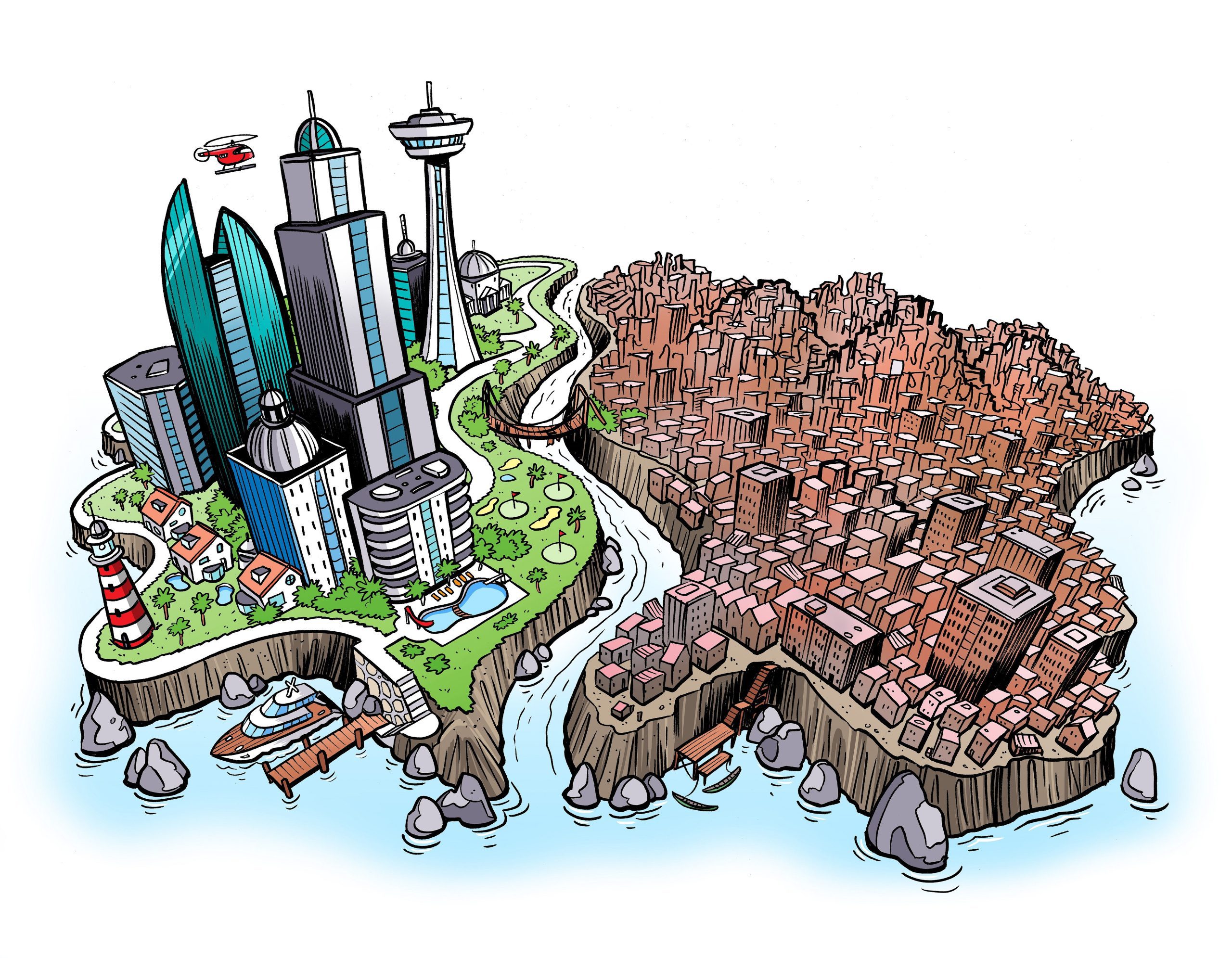A scientific study into socio-economic segregation highlights the widening gap between people across Europe. The study becomes especially relevant as European nations move forward from the economic crisis, look for ways to accommodate incoming refugees and work towards formulating a joint European Urban Agenda.
The book ‘Socio-Economic Segregation in European Capital Cities’ investigates spatial patterns of socio-economic status in thirteen capital cities across Europe and shows that the rich and the poor are living at an increasing distance from each other.
“The solution to segregated cities is not enforced mixing of different groups. Research shows that this does not work. The real answer to reducing inequality lies in education. Education and equal opportunity. This will create social mobility and empowers people to live where they choose to, and not where they are forced to,” explained Professor Maarten van Ham from the Faculty of Architecture and the Built Environment, Delft University of Technology. Van Ham is one of the editors of the book, together with Tiit Tammaru, Szymon Marcińczak, and Sako Musterd.
The data used in the book was collected by 13 teams based in 13 countries, from the North and South to the East and West of Europe. The data also takes into consideration the socio-political climate of the countries, for instance, the type of welfare state and the housing market system. The results of the study came as somewhat unexpected to a lot of people, and the study has been receiving a lot of media attention across Europe. “We thought we could predict levels of segregation. But, reality was a lot more complicated than we expected”.
Stockholm
One of the biggest surprises was the high level of segregation in Stockholm, which came in at number five out of the 13 cities investigated. This, explained Van Ham, was partly due to a “neo-liberal wind” in Swedish policies in the last decade and an increasing immigrant population. Amsterdam, which comes in at number eight, was the only city in which segregation slightly decreased in the last ten years. “What’s interesting in Amsterdam is that during the economic crisis, middle-class households that would typically move to the suburbs stayed in the city,” he said. Tallinn, with its complex ethnic landscape comprising Estonians and large numbers of Russian speakers, is highly segregated.
“Is segregation a bad thing? Yes and no. Most people are more comfortable living with like-minded neighbours. Problems arise when segregation levels become very high and lead to social exclusion. Segregation can be especially problematic when poverty concentrations overlap with concentrations of ethnic minority groups.”
It is imperative for engineers to engage with social issues such as segregation, and think of solutions within their own framework. “If there is faster, cheaper transport then the spatial gaps between people become smaller. Access to superfast internet for everyone can give people access to information and knowledge regardless of where they are. Technological solutions can help to overcome social problems and inequality.” So, whether you’re studying architecture and urban design or aeronautics, think about how your design can make the world a better place.
Cities studied in order of decreasing level of segregation
1. Madrid
2. Milan
3. Tallinn
4. London
5. Stockholm
6. Vienna
7. Athens
8. Amsterdam
9. Budapest
10. Riga
11. Vilnius
12. Prague
13. Oslo



Comments are closed.